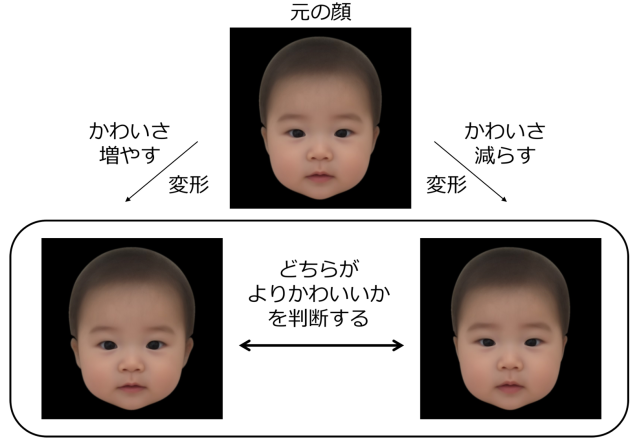
Your baby may be cute, but is it scientifically proven cute?
Cuteness is easily the most potent weapon in a baby’s arsenal. How else can they make adults succumb to their wills by repeatedly hand-feeding them and wiping their butts?
▼ “You there, cease that infernal clicking and clacking on your box and tend to my rear!”

Because of this, science has long sought for a way to end this reign of tyranny and attempted to decode the cuteness factors that make babies so powerful. In the 1940s, Austrian Nobel Laureate Konrad Lorenz made the breakthrough development of the kindchenschema or “baby schema” which is a set of facial features to trigger a sense of cuteness in humans. However, given Lorenz’s nationality, progress in kindchenschema was largely limited to Caucasian babies. So, a research group headed by Professor Hiroshi Nittono at the Graduate School of Human Sciences in Osaka University set out to determine the set of facial features that combine to make a cute Japanese baby.
Following the work pioneered by Lorenz, Nittono’s team gathered a collection of 80 expressionless frontal faces of six-month-olds and showed them to 200 Japanese men and women between the ages of 20 and 69. Those surveyed were asked to rate the babies on a scale of one to seven, with one being “not cute at all” and seven representing “very cute.” With the range of data collected, the researchers could look beyond matters of personal taste and isolate features that consistently lead to high cuteness scores. It turned out that these Japanese kindchenschema weren’t very different from Western ones after all.
In the next step in the study, the team used the factors to alter 50 baby faces, making both “cuter” and “less cute” versions.
▼ Top: Original baby, Bottom Left: Baby altered to look cuter, Bottom Right: Baby altered to look less cute
These pairs of faces were then shown to another 587 Japanese men and women via an online survey in which they were asked to select which one was cuter.
For the most part, respondents selected the scientifically cute baby 90 percent of the time. However, an interesting exception was the group of Japanese men in their 20s, who only chose the artificially cute baby 70 to 80 percent of the time. Either they’re of the enlightened mind that all babies are intrinsically equally cute, or they just can’t tell a cute baby if it puked rainbows in their faces.
▼ Graphs showing the results of the online surveys with percentages of matching answers on the y-axis and age group on the x-axis. Circles represent female respondents and triangles are males. The left graph shows the results from only the pair of faces pictured above. The right graphs shows the results of a further 50 pairs of faces.
The results of this study led to the creation of the Japanese Cute Infant Face (JCIF) Dataset which is freely available online for other to continue the research. I decided to download it myself and ran it through an enhanced AI that I developed in about five minutes to generate THE cutest human being ever to grace the Earth…
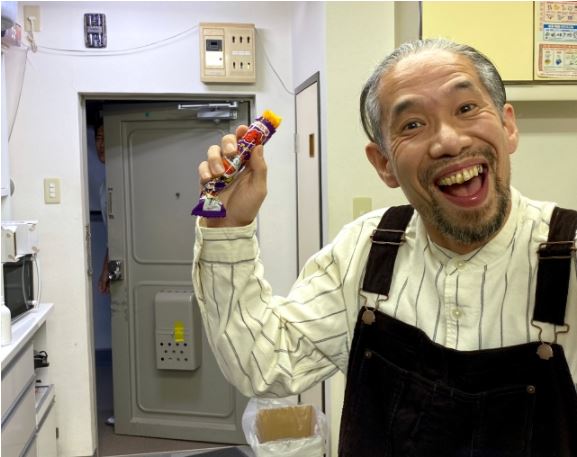
Perhaps humanity isn’t able to handle this level of cuteness yet.
As for overcoming the grip that babies have on our free will, more research will be needed. However, this data does open the door for creating an army of robots that can become artificially enchanted by newborns and do all the messy work for us. I hear Pepper’s looking for a new gig these days.
Source: ResOU, JCIF Dataset via MONOist
Images: ResOU unless otherwise noted
● Want to hear about SoraNews24’s latest articles as soon as they’re published? Follow us on Facebook and Twitter!

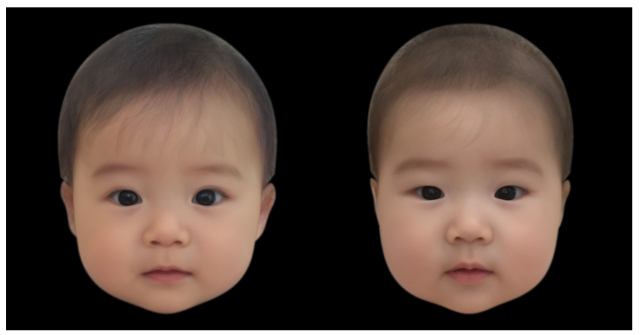
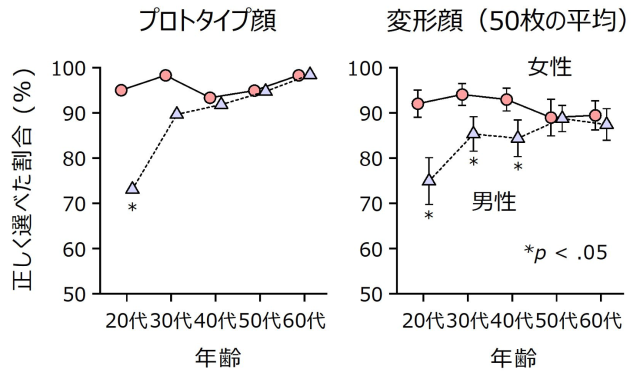
 Babies understand that people with supernatural powers are better, according to Japanese study
Babies understand that people with supernatural powers are better, according to Japanese study Popular Japanese treat Tokyo Banana gets special makeover for baby panda’s debut at Ueno Zoo
Popular Japanese treat Tokyo Banana gets special makeover for baby panda’s debut at Ueno Zoo Japanese study finds KFC’s paripari crispy chicken sound increases blood flow in brain, appetite
Japanese study finds KFC’s paripari crispy chicken sound increases blood flow in brain, appetite Newborn baby sand cat totally melts hearts across Japan【Video】
Newborn baby sand cat totally melts hearts across Japan【Video】 6 surprising things about having a baby in Japan
6 surprising things about having a baby in Japan Foreigner’s request for help in Tokyo makes us sad for the state of society
Foreigner’s request for help in Tokyo makes us sad for the state of society Historical figures get manga makeovers from artists of Spy x Family, My Hero Academia and more
Historical figures get manga makeovers from artists of Spy x Family, My Hero Academia and more McDonald’s new Happy Meals offer up cute and practical Sanrio lifestyle goods
McDonald’s new Happy Meals offer up cute and practical Sanrio lifestyle goods Red light district sushi restaurant in Tokyo shows us just how wrong we were about it
Red light district sushi restaurant in Tokyo shows us just how wrong we were about it Anime girl English teacher Ellen-sensei becomes VTuber/VVTUber and NFT
Anime girl English teacher Ellen-sensei becomes VTuber/VVTUber and NFT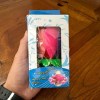 Celebrate another year of life by putting it in jeopardy with this birthday candle flower
Celebrate another year of life by putting it in jeopardy with this birthday candle flower Japan’s massive matcha parfait weighs 6 kilos, contains hidden surprises for anyone who eats it
Japan’s massive matcha parfait weighs 6 kilos, contains hidden surprises for anyone who eats it Sandwiches fit for a sumo served up in Osaka【Taste Test】
Sandwiches fit for a sumo served up in Osaka【Taste Test】 Tokyo Tsukiji fish market site to be redeveloped with 50,000-seat stadium, hotel, shopping center
Tokyo Tsukiji fish market site to be redeveloped with 50,000-seat stadium, hotel, shopping center A Gintama fan’s emotional 19-year journey to buy a proper Lake Toya bokuto wooden katana【Pics】
A Gintama fan’s emotional 19-year journey to buy a proper Lake Toya bokuto wooden katana【Pics】 Japanese ramen restaurants under pressure from new yen banknotes
Japanese ramen restaurants under pressure from new yen banknotes All-you-can-drink Starbucks and amazing views part of Tokyo’s new 170 meter-high sky lounge
All-you-can-drink Starbucks and amazing views part of Tokyo’s new 170 meter-high sky lounge French Fries Bread in Tokyo’s Shibuya becomes a hit on social media
French Fries Bread in Tokyo’s Shibuya becomes a hit on social media Studio Ghibli releases new action figures featuring Nausicaä of the Valley of the Wind characters
Studio Ghibli releases new action figures featuring Nausicaä of the Valley of the Wind characters New private rooms on Tokaido Shinkansen change the way we travel from Tokyo to Kyoto
New private rooms on Tokaido Shinkansen change the way we travel from Tokyo to Kyoto Studio Ghibli glasses cases let anime characters keep an eye on your spectacles
Studio Ghibli glasses cases let anime characters keep an eye on your spectacles Beautiful Ghibli sealing wax kits let you create accessories and elegant letter decorations【Pics】
Beautiful Ghibli sealing wax kits let you create accessories and elegant letter decorations【Pics】 Studio Ghibli releases Kiki’s Delivery Service chocolate cake pouches in Japan
Studio Ghibli releases Kiki’s Delivery Service chocolate cake pouches in Japan New definition of “Japanese whiskey” goes into effect to prevent fakes from fooling overseas buyers
New definition of “Japanese whiskey” goes into effect to prevent fakes from fooling overseas buyers Our Japanese reporter visits Costco in the U.S., finds super American and very Japanese things
Our Japanese reporter visits Costco in the U.S., finds super American and very Japanese things Studio Ghibli unveils Mother’s Day gift set that captures the love in My Neighbour Totoro
Studio Ghibli unveils Mother’s Day gift set that captures the love in My Neighbour Totoro New Japanese KitKat flavour stars Sanrio characters, including Hello Kitty
New Japanese KitKat flavour stars Sanrio characters, including Hello Kitty More foreign tourists than ever before in history visited Japan last month
More foreign tourists than ever before in history visited Japan last month New Pokémon cakes let you eat your way through Pikachu and all the Eevee evolutions
New Pokémon cakes let you eat your way through Pikachu and all the Eevee evolutions Sales of Japan’s most convenient train ticket/shopping payment cards suspended indefinitely
Sales of Japan’s most convenient train ticket/shopping payment cards suspended indefinitely Sold-out Studio Ghibli desktop humidifiers are back so Totoro can help you through the dry season
Sold-out Studio Ghibli desktop humidifiers are back so Totoro can help you through the dry season Japanese government to make first change to romanization spelling rules since the 1950s
Japanese government to make first change to romanization spelling rules since the 1950s Ghibli founders Toshio Suzuki and Hayao Miyazaki contribute to Japanese whisky Totoro label design
Ghibli founders Toshio Suzuki and Hayao Miyazaki contribute to Japanese whisky Totoro label design Doraemon found buried at sea as scene from 1993 anime becomes real life【Photos】
Doraemon found buried at sea as scene from 1993 anime becomes real life【Photos】 Tokyo’s most famous Starbucks is closed
Tokyo’s most famous Starbucks is closed One Piece characters’ nationalities revealed, but fans have mixed opinions
One Piece characters’ nationalities revealed, but fans have mixed opinions We asked a Uniqlo employee what four things we should buy and their suggestions didn’t disappoint
We asked a Uniqlo employee what four things we should buy and their suggestions didn’t disappoint Princesses, fruits, and blacksmiths: Study reveals the 30 most unusual family names in Japan
Princesses, fruits, and blacksmiths: Study reveals the 30 most unusual family names in Japan Videos of Japanese cats sucking their own paws melts the Internet’s heart【Videos】
Videos of Japanese cats sucking their own paws melts the Internet’s heart【Videos】 Roughly 40 percent of single Japanese men in their 20s have never been on a date, survey says
Roughly 40 percent of single Japanese men in their 20s have never been on a date, survey says Celebrate panda resurgence with visit to Chengdu Research Base and a literal pile of baby bears!
Celebrate panda resurgence with visit to Chengdu Research Base and a literal pile of baby bears! Upcoming Vita game Murasaki Baby is delightfully dark and cute in equal parts 【GIFs】
Upcoming Vita game Murasaki Baby is delightfully dark and cute in equal parts 【GIFs】 Upcoming escape game in Osaka pits players against Whity with only a 1% chance of success
Upcoming escape game in Osaka pits players against Whity with only a 1% chance of success Survey claims that 30 percent of boys’ love fans in Japan are men
Survey claims that 30 percent of boys’ love fans in Japan are men Baby Star Ramen Sneakers are this season’s tastiest kicks【Photos】
Baby Star Ramen Sneakers are this season’s tastiest kicks【Photos】 Tokyo’s latest plan to boost birth rate: Pay people 100,000 yen per baby they give birth to
Tokyo’s latest plan to boost birth rate: Pay people 100,000 yen per baby they give birth to Data shows Fukui Prefecture may be the best place to live in Japan, but survey results differ
Data shows Fukui Prefecture may be the best place to live in Japan, but survey results differ Baby Chanco: The Japanese baby with a full head of thick, lustrous hair
Baby Chanco: The Japanese baby with a full head of thick, lustrous hair Sports car engine-revving plushies, recorded from real Honda, on the way for Japanese babies【Vid】
Sports car engine-revving plushies, recorded from real Honda, on the way for Japanese babies【Vid】 Monpoké baby brand now sells customizable Pokémon baby rings for the little love of your life
Monpoké baby brand now sells customizable Pokémon baby rings for the little love of your life Small children have magnetic “cat-attracting” ability, adorable photos from Japan show
Small children have magnetic “cat-attracting” ability, adorable photos from Japan show Visiting Taiwan’s cat village, where the cats are ready for cuddles!【Photos】
Visiting Taiwan’s cat village, where the cats are ready for cuddles!【Photos】
Leave a Reply